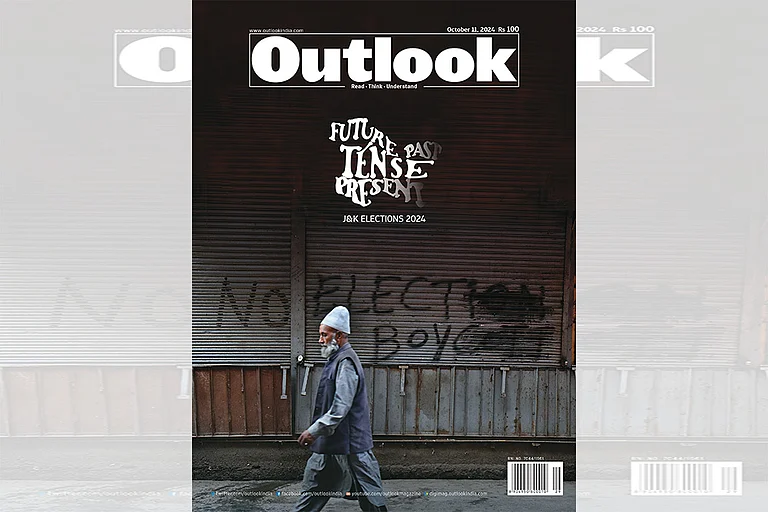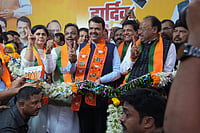The political scenario in Jammu and Kashmir (J&K) has always been dynamic, but the abrogation of Article 370 in 2019 shifted the region’s politics significantly. It resulted in an ongoing struggle for regional and national parties to adapt to the altered landscape, as voter landscapes have changed, new players have emerged and the Bharatiya Janata Party (BJP) has consolidated its influence. To make sense of this situation requires examining not only the circumstances leading to the abrogation, but also the internal workings of key regional parties, the rise of new political forces and the BJP’s strategic moves to reshape J&K’s politics.
The assembly election of 2014 was significant as it set a precedent for politics in J&K. The Peoples Democratic Party (PDP), led by Mehbooba Mufti, built its campaign on opposing the BJP’s integrationist agenda, but surprised many by forging a coalition with the BJP after the elections. While politically pragmatic, this coalition disillusioned the PDP’s traditional support base, many of whom felt betrayed by what they perceived as an act of compromising the party’s autonomy-driven ideology.
Historically, the PDP’s platform was built around advocating for Kashmir’s autonomy, in stark contrast to the BJP’s long-standing objective of integrating J&K fully into the Indian Union. When the PDP joined hands with the BJP, it weakened its credibility and alienated its voter base. Tensions grew within the PDP’s ranks―while some leaders supported the alliance, others opposed. The coalition government, already fragile, eventually collapsed in 2018 when the BJP withdrew its support. This marked a turning point, setting the stage for the 2019 revocation of Article 370 and the drastic reshaping of J&K’s political fabric.
On August 5, 2019, the Union government, led by the BJP, abrogated Article 370, stripping J&K of its special status and splitting the state into two Union Territories—J&K and Ladakh. This move was met with deep discontent in Kashmir, where the loss of statehood and autonomy were seen as an affront to the region’s identity. The Union government, however, took preemptive measures to stifle large-scale protests, imposing a communication blackout and heavy security restrictions across the Valley.
Despite these measures, discontent simmered under the surface. The BJP portrayed the absence of widespread public protests as evidence of acceptance of the new status quo. However, critics argue that the silence was maintained through coercive state measures, rather than genuine acquiescence. In the years following the abrogation, the BJP has tried to solidify its narrative that J&K is ready for new opportunities without Article 370. Still, political alienation remains palpable, especially as the region grapples with economic challenges and a lack of political representation.
In response to the abrogation, traditional regional parties like the National Conference (NC) and the PDP came together to form the People’s Alliance for Gupkar Declaration (PAGD). The alliance was a rare instance of political adversaries joining forces to seek the restoration of J&K’s special status. Despite this united front, the PAGD was plagued by internal divisions from the start.
The primary tension within the alliance stemmed from the PDP’s tarnished credibility after its coalition with the BJP. The NC, seeking to reassert its dominance, began distancing itself from the PDP, further destabilising the alliance. As the BJP encouraged splinter factions within these parties and bolstered new political formations, the opposition fragmented, creating confusion among voters and weakening the PAGD’s influence.
One of the most notable developments in J&K’s post-2019 political landscape has been the rise of new political entities, many of which are seen as proxies backed by the BJP to fracture the traditional regional vote. The emergence of these parties has significantly weakened the influence of established political forces like the NC and the PDP.
For example, parties such as the Jammu and Kashmir People’s Conference, led by Sajjad Lone, and the Apni Party, headed by Altaf Bukhari, have positioned themselves as pragmatic alternatives. Both parties advocate for working with the Union government rather than opposing it outright, framing their approach as being more beneficial to the people of J&K. The creation of the Democratic Azad Party by former Congressman Ghulam Nabi Azad further underscores the fragmentation of J&K’s political sphere, with multiple new parties challenging the dominance of the NC and the PDP. These developments reflect how regional politics has shifted towards a more fractured structure, with smaller parties vying for influence and voter support.
The BJP has actively capitalised on the fragmentation of J&K’s traditional political forces. By supporting breakaway factions and promoting new political entities, the BJP has effectively diluted the influence of established regional parties. The weakening of these opposition parties has ensured that no single entity can secure a majority in the future, making it possible for coalition governments that are more likely to include the BJP or be influenced by it.
This strategy was evident in the case of Engineer Rashid, a popular leader from Kashmir who was detained on terror charges, but was allowed to contest the Lok Sabha elections. He defeated NC’s Omar Abdullah. After being released on bail, he is now busy campaigning for the assembly elections. Rashid’s release, some argue, was intended to ensure that his supporters remained politically active, albeit in a fragmented fashion. While Rashid is not directly aligned with the BJP, his presence further complicates the political arithmetic for parties like the NC and the PDP, which are already struggling to maintain unity.
Adding to the political complexity is the rise of independent candidates, many of whom were previously associated with the NC or the PDP, and associated members of the now banned Jamaat-e-Islami, who infamously garnered indirect covert support to the PDP. Moreover, politicians who had won elections earlier and were denied tickets this time, have decided to contest independently, further splintering the votes and complicating the electoral dynamics.
In several constituencies, independent candidates have garnered significant support, sometimes even outperforming their former parties. Candidates such as Shabir Ahmad Kullay and Aijaz Ahmad Mir have emerged as key political players, representing a growing trend of dissatisfaction with the established parties. Their presence is further fragmenting the political landscape of J&K and signals a shift towards a more localised and personality-driven politics.
Given the current state of political fragmentation in J&K, the chances of any one party securing a clear majority appear slim. Coalition governments, featuring alliances between traditional parties, new political entities and independents, are likely to become the norm. In such a scenario, the BJP, either directly or through its proxy parties, is positioned to play a key role in shaping governance.
However, the stability of coalition governments in J&K remains uncertain. The Union government may once again impose Governor’s Rule if a coalition proves too unstable to govern effectively. If this happens, it would allow the BJP to maintain a significant degree of control over the region, perpetuating its strategy of weakening regional parties and consolidating power through alliances and indirect influence.
The political landscape of J&K remains deeply fragmented and fluid in the aftermath of the abrogation of Article 370. While the BJP has successfully shifted the region’s political discourse, opposition forces continue to grapple with the changes, hindered by internal divisions and the emergence of new political entities. The rise of proxy parties, independent candidates and fragmented vote banks has made it nearly impossible for any one party to dominate the political scene. As J&K moves towards future elections, the region’s political trajectory remains uncertain.


















